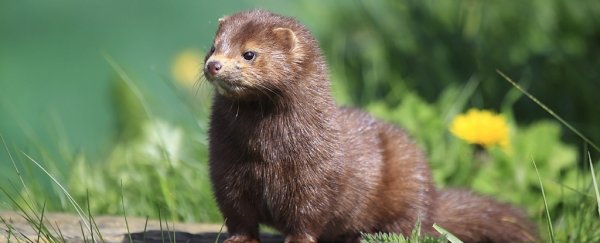The coronavirus pandemic has already claimed more than a million human lives, but we aren't the only living things in danger from COVID-19: minks are being killed off in their thousands because of the spread of the virus.
NBC News reports on the deaths of almost 10,000 minks at farms in Utah in the US, while the picture in Europe has been even bleaker according to Sky News – at a farm in Spain, for example, over 92,000 of the animals have been slaughtered after it was estimated that 90 percent of them had caught the virus.
In the Netherlands, the death toll has been even higher: over 1 million mink have been culled in the country over concerns that the animals could pass the virus back to humans, as per an AP report. World Health Organisation epidemiologist Maria Van Kerkhove has said the risk of catching COVID-19 from an animal remains "very limited".
In the case of the Utah outbreak, it covers nine fur farms and has been thought to have been caused by the virus being passed on from an infected handler. The first signs of the virus spreading to minks in the region were spotted back in August.
COVID-19 affects minks in a similar way to people, causing respiratory problems that tend to be worse in older animals. The mustelids group, which includes minks, weasels and badgers, is known to be at particular risk of catching the SARS-CoV-2 coronavirus.
"Minks show open mouth breathing, discharge from their eyes and nose, and are not sick for several days before they pass away," Utah veterinarian Dean Taylor told NBC News. "They typically die within the next day."
The lungs of the dead minks were "wet, heavy, red and angry" when examined, veterinary pathologist Tom Baldwin, from Utah State University, told Science. That's consistent with signs of pneumonia, and matches up with investigations carried out in Europe.
Scientists are urgently trying to establish which animals are able to pass the virus back to humans – there are instances of it potentially happening, but as noted by WHO, at the moment the risk is thought to be low (and much lower than the risk of human-to-human transmission).
It appears we can very much pass it on to other species though, as this tragedy among mink populations shows – yet another reason for the rest of the animal kingdom to be very afraid of us.
No doubt there's much more for scientists to discover about the way COVID-19 passes from humans to animals and back again – we still don't know how humans caught it in the first place – but the US Department of Agriculture is keeping track of infected animals here.
It's another sad story in a year that's been full of them, but there are reasons to be optimistic that a coronavirus vaccine isn't too far off.
